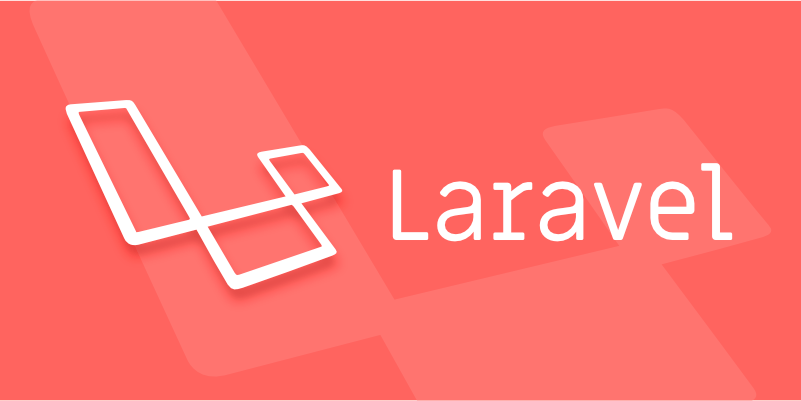To add full-text search in Laravel, use Laravel Scout or MySQL full-text search. 1. For Laravel Scout: install via Composer, publish config, choose a driver like Algolia, add Searchable trait to models, and import data. 2. For MySQL: create full-text indexes and use MATCH/AGAINST in queries. 3. Optimize performance by selecting only necessary fields, managing index updates, scheduling reindexing, and configuring ranking or synonyms when using external services. Each method has trade-offs between scalability and simplicity.

Adding full-text search to a Laravel application can greatly enhance the user experience, especially when dealing with large volumes of text data. While basic searches using LIKE or ILIKE in SQL work for small datasets, they quickly become inefficient as your data grows. Laravel offers several ways to implement more powerful and scalable full-text search functionality.

Using Laravel Scout
Laravel Scout is an official package designed specifically for adding full-text search capabilities to Eloquent models. It provides a simple, driver-based solution that integrates with services like Algolia, Meilisearch, and even MySQL’s native full-text search.

To get started:
- Install Scout via Composer:
composer require laravel/scout - Publish the configuration file:
php artisan vendor:publish --provider="Laravel\Scout\ScoutServiceProvider" - Choose a driver (Algolia is popular for production use)
- Add the
Searchabletrait to your model - Run
php artisan scout:import "App\Models\YourModel"to index existing records
One thing to note is that Scout doesn’t handle search logic directly—it delegates that to the configured driver. This makes it flexible but also means you’ll need to understand the behavior and limitations of your chosen driver.

Using MySQL Full-Text Search
If you're working on a smaller project or want to avoid external dependencies, MySQL's built-in full-text search might be sufficient.
You’ll first need to:
- Create a full-text index on the relevant columns
- Use raw queries or query builder methods to perform searches
For example:
Post::whereRaw("MATCH(title, content) AGAINST(? IN BOOLEAN MODE)", [$searchTerm]);This approach works well for basic needs but lacks some advanced features like typo tolerance or relevance scoring found in dedicated search engines. Also, performance degrades significantly beyond a few thousand rows.
Consider Performance and Indexing Strategy
No matter which method you choose, how you structure and update your searchable data matters.
Some tips:
- Be selective about which fields you index—more fields mean slower updates and larger indexes
- For Scout users, override the
toSearchableArray()method to control what gets indexed - Schedule frequent reindexing jobs if your data changes often
- Monitor indexing lag, especially under heavy write load
If you're using a service like Algolia, consider setting up synonyms and custom ranking rules to improve result quality without changing code every time.
That's basically all you need to know to start implementing full-text search in Laravel. There are multiple paths, each with trade-offs between simplicity, scalability, and feature richness.
The above is the detailed content of Implementing Full-Text Search in Laravel Applications?. For more information, please follow other related articles on the PHP Chinese website!

Hot AI Tools

Undress AI Tool
Undress images for free

Undresser.AI Undress
AI-powered app for creating realistic nude photos

AI Clothes Remover
Online AI tool for removing clothes from photos.

Clothoff.io
AI clothes remover

Video Face Swap
Swap faces in any video effortlessly with our completely free AI face swap tool!

Hot Article

Hot Tools

Notepad++7.3.1
Easy-to-use and free code editor

SublimeText3 Chinese version
Chinese version, very easy to use

Zend Studio 13.0.1
Powerful PHP integrated development environment

Dreamweaver CS6
Visual web development tools

SublimeText3 Mac version
God-level code editing software (SublimeText3)
 Working with pivot tables in Laravel Many-to-Many relationships
Jul 07, 2025 am 01:06 AM
Working with pivot tables in Laravel Many-to-Many relationships
Jul 07, 2025 am 01:06 AM
ToworkeffectivelywithpivottablesinLaravel,firstaccesspivotdatausingwithPivot()orwithTimestamps(),thenupdateentrieswithupdateExistingPivot(),managerelationshipsviadetach()andsync(),andusecustompivotmodelswhenneeded.1.UsewithPivot()toincludespecificcol
 Sending different types of notifications with Laravel
Jul 06, 2025 am 12:52 AM
Sending different types of notifications with Laravel
Jul 06, 2025 am 12:52 AM
Laravelprovidesacleanandflexiblewaytosendnotificationsviamultiplechannelslikeemail,SMS,in-appalerts,andpushnotifications.Youdefinenotificationchannelsinthevia()methodofanotificationclass,andimplementspecificmethodsliketoMail(),toDatabase(),ortoVonage
 Understanding Dependency Injection in Laravel?
Jul 05, 2025 am 02:01 AM
Understanding Dependency Injection in Laravel?
Jul 05, 2025 am 02:01 AM
Dependency injection automatically handles class dependencies through service containers in Laravel without manual new objects. Its core is constructor injection and method injection, such as automatically passing in the Request instance in the controller. Laravel parses dependencies through type prompts and recursively creates the required objects. The binding interface and implementation can be used by the service provider to use the bind method, or singleton to bind a singleton. When using it, you need to ensure type prompts, avoid constructor complications, use context bindings with caution, and understand automatic parsing rules. Mastering these can improve code flexibility and maintenance.
 Strategies for optimizing Laravel application performance
Jul 09, 2025 am 03:00 AM
Strategies for optimizing Laravel application performance
Jul 09, 2025 am 03:00 AM
Laravel performance optimization can improve application efficiency through four core directions. 1. Use the cache mechanism to reduce duplicate queries, store infrequently changing data through Cache::remember() and other methods to reduce database access frequency; 2. Optimize database from the model to query statements, avoid N 1 queries, specifying field queries, adding indexes, paging processing and reading and writing separation, and reduce bottlenecks; 3. Use time-consuming operations such as email sending and file exporting to queue asynchronous processing, use Supervisor to manage workers and set up retry mechanisms; 4. Use middleware and service providers reasonably to avoid complex logic and unnecessary initialization code, and delay loading of services to improve startup efficiency.
 Managing database state for testing in Laravel
Jul 13, 2025 am 03:08 AM
Managing database state for testing in Laravel
Jul 13, 2025 am 03:08 AM
Methods to manage database state in Laravel tests include using RefreshDatabase, selective seeding of data, careful use of transactions, and manual cleaning if necessary. 1. Use RefreshDatabasetrait to automatically migrate the database structure to ensure that each test is based on a clean database; 2. Use specific seeds to fill the necessary data and generate dynamic data in combination with the model factory; 3. Use DatabaseTransactionstrait to roll back the test changes, but pay attention to its limitations; 4. Manually truncate the table or reseed the database when it cannot be automatically cleaned. These methods are flexibly selected according to the type of test and environment to ensure the reliability and efficiency of the test.
 Choosing between Laravel Sanctum and Passport for API authentication
Jul 14, 2025 am 02:35 AM
Choosing between Laravel Sanctum and Passport for API authentication
Jul 14, 2025 am 02:35 AM
LaravelSanctum is suitable for simple, lightweight API certifications such as SPA or mobile applications, while Passport is suitable for scenarios where full OAuth2 functionality is required. 1. Sanctum provides token-based authentication, suitable for first-party clients; 2. Passport supports complex processes such as authorization codes and client credentials, suitable for third-party developers to access; 3. Sanctum installation and configuration are simpler and maintenance costs are low; 4. Passport functions are comprehensive but configuration is complex, suitable for platforms that require fine permission control. When selecting, you should determine whether the OAuth2 feature is required based on the project requirements.
 Implementing Database Transactions in Laravel?
Jul 08, 2025 am 01:02 AM
Implementing Database Transactions in Laravel?
Jul 08, 2025 am 01:02 AM
Laravel simplifies database transaction processing with built-in support. 1. Use the DB::transaction() method to automatically commit or rollback operations to ensure data integrity; 2. Support nested transactions and implement them through savepoints, but it is usually recommended to use a single transaction wrapper to avoid complexity; 3. Provide manual control methods such as beginTransaction(), commit() and rollBack(), suitable for scenarios that require more flexible processing; 4. Best practices include keeping transactions short, only using them when necessary, testing failures, and recording rollback information. Rationally choosing transaction management methods can help improve application reliability and performance.
 Handling HTTP Requests and Responses in Laravel.
Jul 16, 2025 am 03:21 AM
Handling HTTP Requests and Responses in Laravel.
Jul 16, 2025 am 03:21 AM
The core of handling HTTP requests and responses in Laravel is to master the acquisition of request data, response return and file upload. 1. When receiving request data, you can inject the Request instance through type prompts and use input() or magic methods to obtain fields, and combine validate() or form request classes for verification; 2. Return response supports strings, views, JSON, responses with status codes and headers and redirect operations; 3. When processing file uploads, you need to use the file() method and store() to store files. Before uploading, you should verify the file type and size, and the storage path can be saved to the database.






